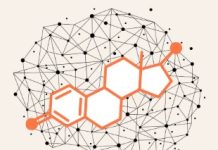Professor Michael Roth from the Department Biomedicine & Pneumology, at the University Hospital Basel, discusses development of medication for asthma and new asthma therapies.
Asthma is the most common non-communicable chronic inflammatory disease of the lung worldwide with no cure available. In the 2016 EU Symposium on the Awareness of allergic diseases it was described as the disease which is often misdiagnosed and inappropriately treated. Asthma symptoms can be controlled by inhaled or orally applied medication, but the effect of the drugs does not last and many have to be applied at least twice per day. In the EU asthma related health care costs and loss of working hours accumulated to 19.6 billion Euros. Checking the pipelines of pharmaceutical companies and published research, it seems that there is little effort made to find new drugs for asthma.
Asthma in children
It is estimated that 50% of the worldwide 350 million asthma patients are children and many suffer lifelong from the disease (http://www.who.int/respiratory/asthma/en/). Asthma symptoms are chest tightness, wheezing, bronchospasm, cough, reversible airflow obstruction, and airway hyper-responsiveness, which limited the capacity to breath and lead to chronic airway inflammation. The major target for therapies is the chronic inflammation of the bronchi which is assumed to cause irreversible airway wall remodelling. Increasing evidence suggests another scenario where inflammation and remodelling are independent pathologies. In studies assessing school and pre-school children with wheezing airway wall remodelling was independent of inflammation but correlated with the frequency of wheezing. In tissue biopsies of adult asthma patients, airway wall remodelling can occurred not as assumed earlier after long periods of chronic inflammation, but within 4-8 days after allergen inhalation. Furthermore, airway inflammation can be limited with the existing drugs, while none of the drugs has any proven effect airway wall remodelling.
In 1926 the only consistent pathologies in patients who died of asthma was bronchial mucus accumulation and an increased mass of bronchial muscle bundles. The latter was assumed to cause bronchoconstriction and limit the airflow; – cigarette smoking was advised to relax the constricted muscle. In the 1950-ies anti-inflammatory glucocorticoids were introduced for in asthma therapy and in the 1960-ies β2-agonists were added two relax muscle constriction. Only in 1991 the combination of both classes of drugs was suggested for asthma therapy. However, mechanism why the combined drugs achieved better symptom control than each drug alone was not discovered until 2002, when we described the synchronising effect of the combined drugs on cell regulatory proteins. Meanwhile additional, mainly anti-inflammatory drugs including phosphodiesterase inhibitors, prostaglandin E analogues and anti-oxidant were investigated as potential asthma therapies. So far, the anti-inflammatory action of these drugs could not replace glucocorticoids. If inflammation is the driving force behind asthma pathologies anti-inflammatory drugs should reduce all pathologies. However, this is not the case for airway wall remodelling. The American Thoracic Society suggested 2017 that the pathogenesis of asthma has to be re-investigated if we want to find a cure for asthma. Such investigations need financing by independent un-biased government funds, but it seems that asthma is not recognized by politicians as the most common disease with a great impact on the health care systems and the society.
Developing new therapies
To develop new asthma therapies it is necessary to understand its pathogenesis which, besides facts is today still focused on inflammation and over-reacting immune response. The newly developed drugs which target specific cytokines or growth factors benefit only a small portion of defined asthma patients. In contrast, 40% of asthma patients have no link of their disease to allergens, their asthma attacks can be caused by cold air, changes of air humidity, dust, physical or psychologic stress. Today we do not understand how these events cause an asthma attack and thus cannot offer any special therapies. Thus, all kinds of physiotherapeutic methods have been suggested with more or less lasting success, but none can cure asthma.
A new type of asthma drugs is currently investigated and some of them have been approved for asthma therapy, humanized antibodies. Such specifically developed antibodies have a specific target such as IL-3, IL-4, IL-5, IL-13 and TNF-α, and do not provoke an immune response. The major problem with these drugs is that they benefit only sub-groups of asthma patients with specific phenotypes and the price of these drugs makes them un-affordable for patients in less developed countries. Unfortunately, asthma is faster increasing in less developed countries and presents a new burden to their healthy systems. On the mechanistic side most of the humanized antibodies reduce inflammation, but have any proven effect on airway wall remodelling.
With focus on anti-remodelling actions only anti-IgE antibodies have been reported to have the potential to reduce airway wall remodelling, but the published clinical evidence is to scares to prove this action. Either the parameters for airway wall remodelling were indirect or the cohort of patients was too small or pre-selected. No new studies have been lounged by any of the anti-IgE producers and it can be envisaged that such trial will face problems to get approval by ethical committees. Other studies indicated that anti-IgE antibodies did not benefit all patients with high serum IgE associated asthma. Furthermore, the diagnosis which indicates the use of humanised antibodies requires the development of new tools to identify those asthma patients who can benefit from this expensive therapy.
Vitamin deficiencies
The role of vitamin deficiencies as a cause or central contributor chronic inflammatory lung diseases has recently been re-entered the discussion, but clear clinical evidence is limited or non-existing due to lack of funding such studies. Compared to the above mentioned humanized antibodies vitamins present a less attractive target for the pharmaceutical companies. However, it has been reported that a deficiency of vitamins B, C and D during early life is linked to later in life increased susceptibility to develop chronic inflammatory lung diseases. However, scientific proof that vitamin supplementation reduces chronic lung inflammation or asthma attacks is missing.
The lack of new drugs that reduce or halt airway wall remodelling in asthma was recognised by the American Thoracic Society in 2015. The reason why no breakthrough in asthma therapy was achieved is the lack of funding for new ideas. Sadly, the most frequent argument for not getting funds is the insufficient supporting scientific data – which results from the lack of funding. Not only new ideas are needed to meet the increasing request for better treatments of asthma, politicians and other decision makers have to be more open for new ideas if they want to reduce health care costs and improve the life of millions of people.
Prof. Dr. Michael Roth (PhD) FERS
Pulmonary Cell Research
Department Biomedicine & Pneumology









